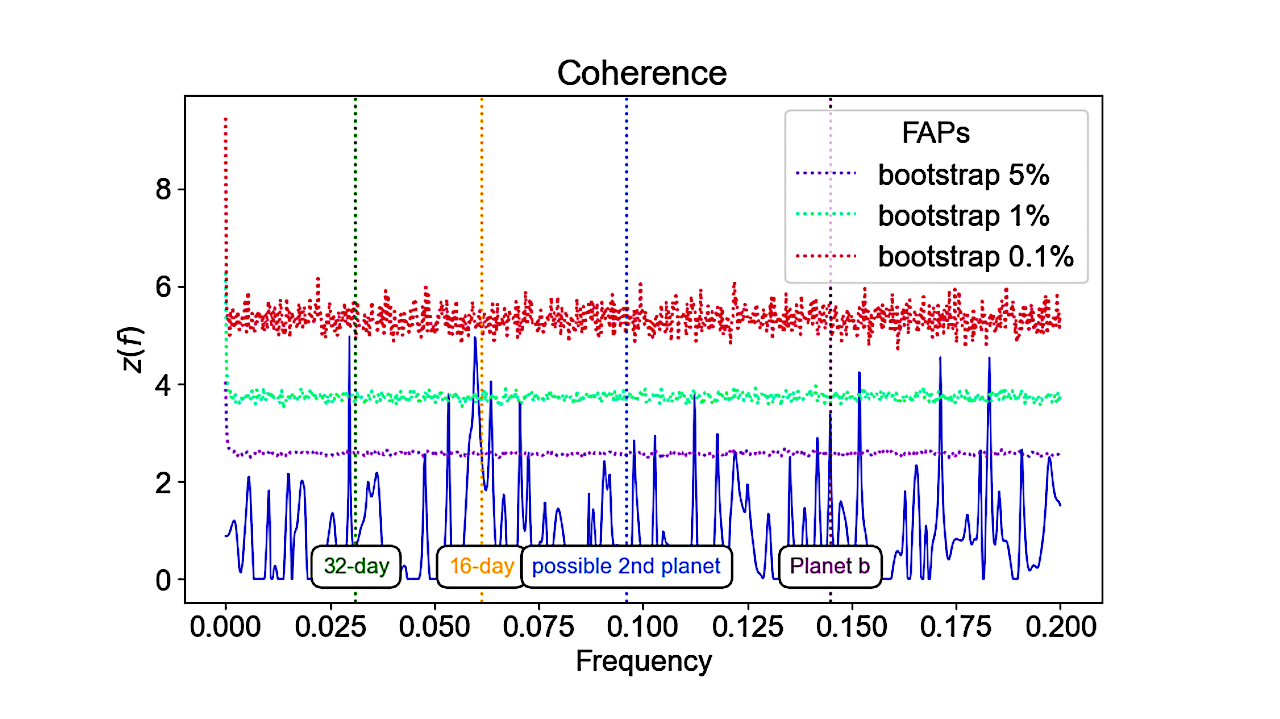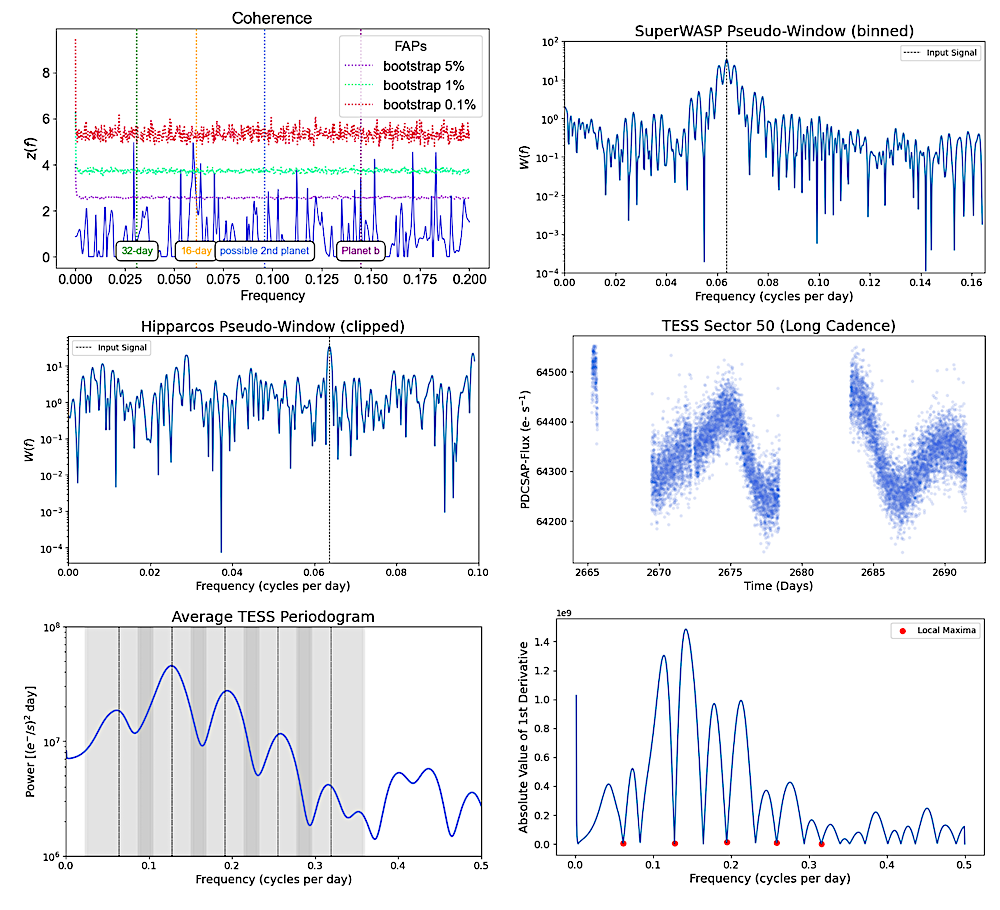Examining The Rotation Of The Planet-hosting M Dwarf GJ 3942

Based on radial velocities, EXORAP photometry, and activity indicators, the HADES team reported a 16.3-day rotation period for the M dwarf GJ 3992. However, an RV–Hα magnitude-squared coherence estimate has significant peaks at frequencies 1/16 cycles/day and 1/32 cycles/day.
We re-analyze HADES data plus Hipparcos, SuperWASP, and TESS photometry to see whether the rotation period could be 32 days with 16-day harmonic. SuperWASP shows no significant periodicities, while the Hipparcos observing cadence is suboptimal for detecting 16- and 32-day periodicities.
Although the average TESS periodogram has peaks at harmonics of 1/16 cycles/day, the harmonic sequence is not fully resolved according to the Rayleigh criterion. The TESS observations suggest a 1/16 cycles/day rotation frequency and a 1/32 cycles/day subharmonic, though resolution makes the TESS rotation detection ambiguous.

Top left: The Fisher-transformed magnitude-squared coherence estimate from RV and Hα has peaks at frequencies 1/32 day−1 and 1/16 day−1 . Top right: The 16-day SuperWASP pseudowindow after binning to a 1-day cadence. The strong peak shows that the observation timings are sensitive to a 16-day periodicity, though we do not detect it. Middle left: The Hipparcos 16-day pseudowindow lacks a strong peak at f = 1/16 day−1 , indicating that the observation timings are suboptimal for detecting 16-day periodicities. Middle right: TESS PDCSAP photometry of GJ 3942 from Sector 52 shows evidence for rotational modulation. Lower left: Average periodogram from seven TESS light curves. Vertical lines indicate local maxima that may correspond to rotation harmonics. Frequencies within one Rayleigh resolution unit of each local maximum are shaded in light gray. Lower right: |dP/df| calculated from average TESS periodogram with probable rotation harmonics indicated by red dots.
Andrew Fonseca, Sarah Dodson-Robinson
Comments: 5 pages, 1 figure, submitted to RNAAS
Subjects: Solar and Stellar Astrophysics (astro-ph.SR); Earth and Planetary Astrophysics (astro-ph.EP)
Cite as: arXiv:2411.05476 [astro-ph.SR] (or arXiv:2411.05476v1 [astro-ph.SR] for this version)
https://doi.org/10.48550/arXiv.2411.05476
Focus to learn more
Submission history
From: Andrew Fonseca
[v1] Fri, 8 Nov 2024 11:04:25 UTC (623 KB)
https://arxiv.org/abs/2411.05476
Astrobiology,








